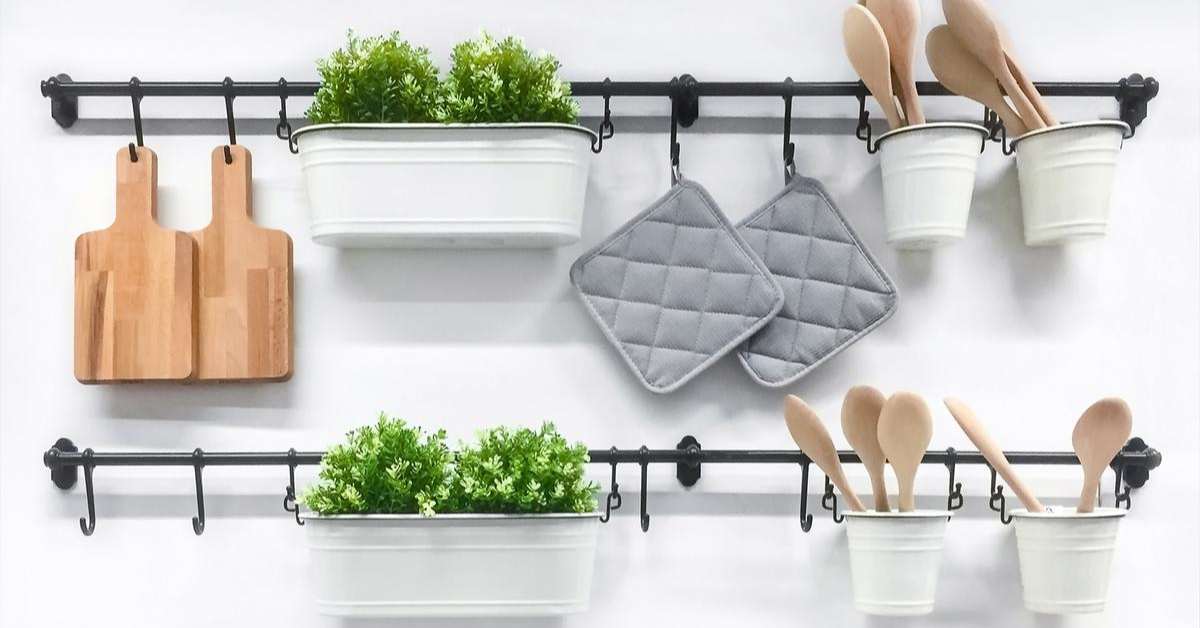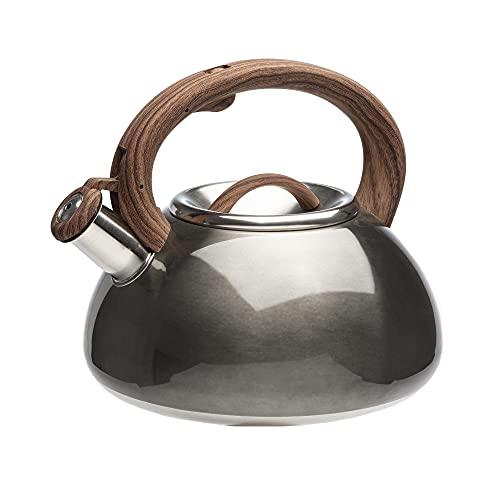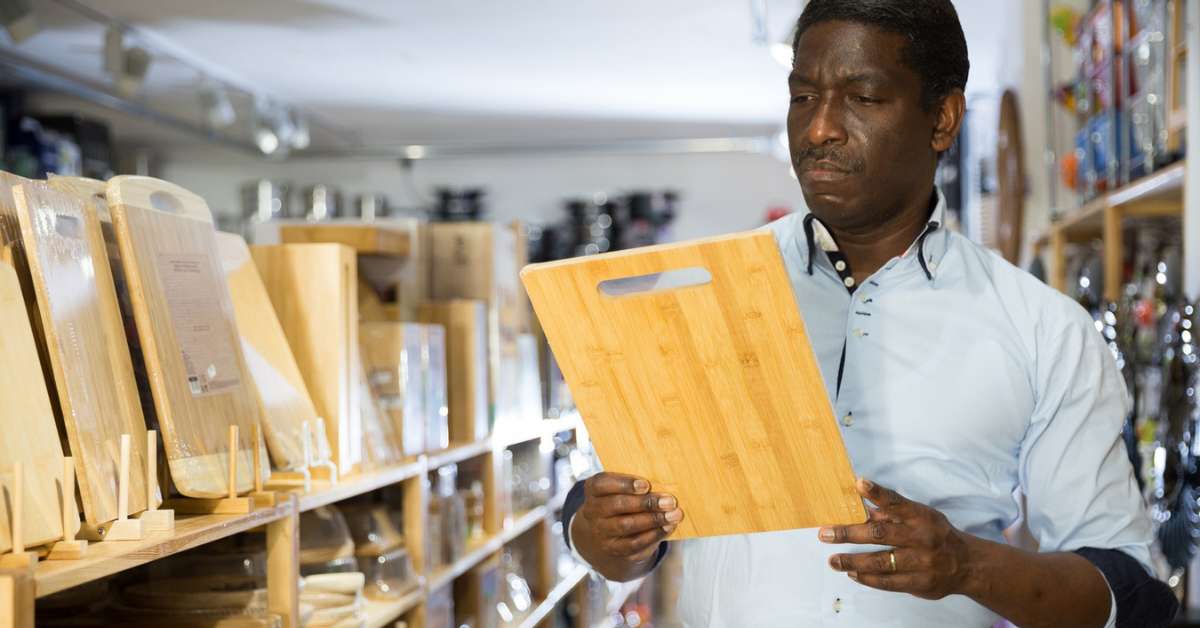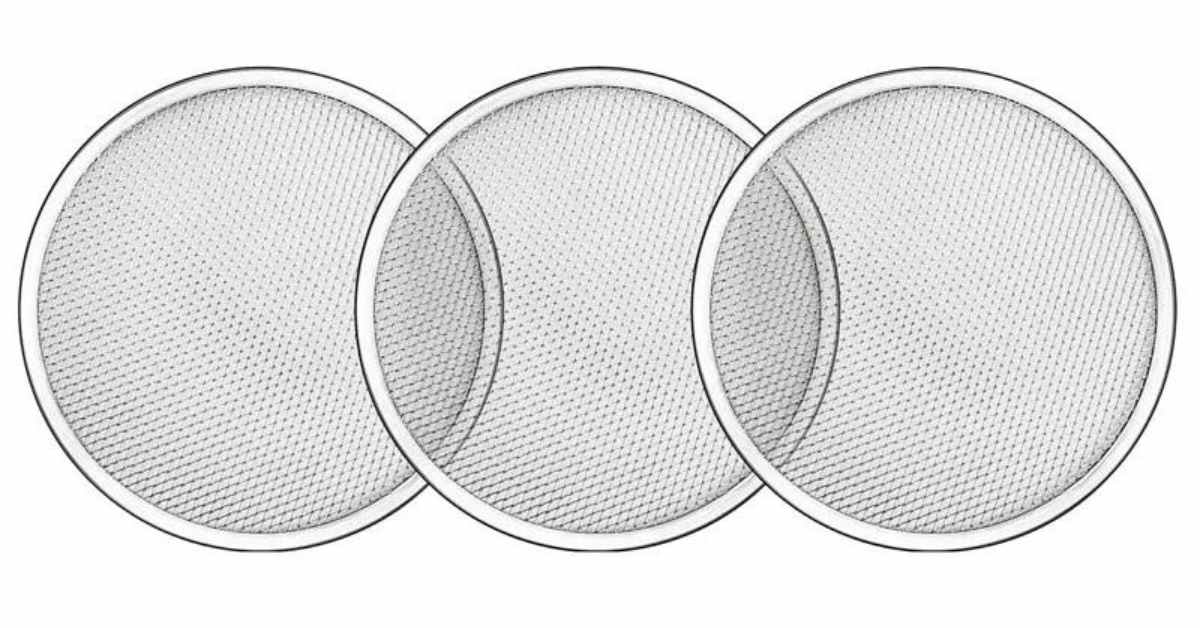Pot holders are essential kitchen accessories that help protect our hands from burns while handling hot pots and pans. Over time, these trusty companions can accumulate dirt, grease, and food stains, making them less effective and hygienic.
That raises an important question: Can you wash pot holders? In this guide, we’ll explore the proper cleaning methods for pot holders, ensuring they stay clean, fresh, and ready to serve their purpose in your kitchen. Let’s dive in!
Table of Contents
ToggleWhat is Pot Holder
Before delving into the cleaning methods, let’s understand what a pot holder is and why it is an indispensable kitchen tool. A pot holder, a hot pad, or a trivet is a protective pad used to handle hot cookware safely. It acts as a barrier between your hands and the scorching heat of pots, pans, or baking dishes, allowing you to move them around without the risk of burns or discomfort.
Pot holders are typically designed to be heat-resistant, providing a reliable shield against high temperatures. They come in various shapes and sizes, ranging from square or rectangular pads to mitt-shaped holders, with enhanced grip and flexibility. The primary purpose of a pot holder is to ensure the safe handling of hot cookware, making it an essential accessory in any kitchen.
Types of Pot Holders

Pot holders come in various types, each offering unique features and benefits. Understanding the different types can help you choose the most suitable pot holders for your needs. Here are some common types of pot holders:
Fabric Pot Holders
Fabric pot holders are made from cotton, linen, or terry cloth. They are soft, flexible, and provide excellent heat insulation. These pot holders often come in square or rectangular shapes and may have added features like quilted padding or silicone grips for better grip and protection.
Silicone Pot Holders
Silicone pot holders are known for their heat-resistant properties and durability. They are made from food-grade silicone that can withstand high temperatures without melting or deforming. Silicone pot holders are easy to clean, as they can be wiped down with a damp cloth or rinsed under running water.
Mitt-shaped Pot Holders
Mitt-shaped pot holders, also known as oven mitts, offer enhanced hand protection and flexibility. They cover your hand and part of your forearm, providing extra coverage when handling hot dishes. These pot holders are often made from heat-resistant materials like cotton or silicone and feature a separate thumb compartment for improved agility.
Magnetic Pot Holders
Magnetic pot holders are designed to attach to metal surfaces like refrigerators or oven doors. They offer convenient storage and quick access to pot holders when needed. These pot holders usually have a magnetic strip or pads on the back, allowing them to cling to metal surfaces securely.
Disposable Pot Holders
Disposable pot holders are ideal for outdoor gatherings, picnics, or events where convenience is a priority. These pot holders are typically made from heat-resistant paper or cardboard and are meant to be discarded after a single use. At the same time, not as durable as other types, disposable pot holders offer a practical solution for temporary or on-the-go situations.
By understanding the different types of pot holders available, you can select the ones that best suit your cooking style, preferences, and safety requirements. Now that we’ve explored the types of pot holders let’s move on to the proper cleaning methods to ensure their longevity and hygiene.
How Often Should You Wash Your Pot Holders
Maintaining clean pot holders is essential for both hygiene and effectiveness in the kitchen. However, the frequency of washing your pot holders may vary based on their usage and material. Here are some guidelines to help you determine how often you should wash your pot holders:
Regular Use Pot Holders:
If you use pot holders daily for handling hot cookware, washing them at least once a week is a good practice. Regular use can lead to the accumulation of dirt, grease, and food stains, which may compromise their cleanliness and heat resistance.
Occasional Use Pot Holders:
For pot holders that see less frequent use, such as those reserved for special occasions or when entertaining guests, washing them after each use or as needed should suffice. Occasional-use pot holders may require less frequent cleaning, but inspecting them for any visible stains or soiling before use is essential.
Stained or Soiled Pot Holders:
Regardless of how often you use your pot holders, washing them immediately is crucial if they become visibly stained, soiled, or come into contact with raw food. Promptly dealing with stains and spills helps maintain the pot holders’ cleanliness and prevents potential cross-contamination in the kitchen.
Heat-Resistant Synthetic Pot Holders:
Pot holders made from heat-resistant synthetic fabrics like Nomex or Kevlar, often used in professional kitchens, may withstand high temperatures but still accumulate dirt and grime. These pot holders should be washed regularly, especially after handling hot cookware.
Silicone Pot Holders:
Silicone pot holders are relatively easy to clean and maintain. A simple wipe with a damp cloth or sponge should be sufficient if they get greasy or dirty. However, it’s a good idea to thoroughly wash them when they show signs of soiling or after heavy use.
Following these guidelines, you can keep your pot holders in top-notch condition, ensuring they protect your hands from burns and maintain a clean and hygienic kitchen environment. Now, let’s move on to the specific cleaning methods for different types of pot holders to ensure they stay fresh and ready for use.
Washing Pot Holders by Hand
Hand washing your pot holders is a gentle and effective method to maintain their cleanliness and extend their lifespan. Follow these step-by-step instructions to ensure thorough cleaning without causing damage to your pot holders:
Step 1: Check the Care Label: Before washing your pot holders, check the care label or manufacturer’s instructions for specific recommendations or restrictions. Different materials may have specific requirements that you need to consider.
Step 2: Pre-treat Stains: If your pot holders have stubborn stains, pre-treat them before washing. Apply a small amount of mild dish soap or liquid detergent directly to the stained area. Gently rub the detergent into the stain and let it sit for a few minutes.
Step 3: Fill a Basin or Sink: Fill a basin or sink with warm water. Avoid using hot water, as it can damage certain materials. Mix a small amount of mild detergent into the water gently to create a soapy solution.
Step 4: Submerge the Pot Holders: Place the pot holders in the soapy water and submerge them completely. Gently agitate the water to ensure even distribution of the detergent. Allow the pot holders to soak for 15-20 minutes to loosen any dirt or grime.
Step 5: Scrub and Rinse: Using a soft-bristle brush or a clean sponge, gently scrub the pot holders to remove any remaining stains or dirt. Pay extra attention to areas that may have absorbed grease or food residues. Rinse the pot holders thoroughly under cool running water to remove any soap residue.
Step 6: Squeeze Out Excess Water: Gently squeeze the excess water from the pot holders after rinsing. Avoid wringing or twisting them, as this can distort their shape or cause damage.
Step 7: Air-Dry: Lay the pot holders flat on a clean towel or hang them up to air-dry. Ensure they are placed in a well-ventilated area away from direct sunlight or heat sources. Allow them to dry completely before using or storing them.
By following these simple steps, you can effectively clean your pot holders by hand, ensuring they remain fresh, hygienic, and ready for use in your kitchen. Next, we’ll explore the specific cleaning methods for machine-washing and drying pot holders, providing alternative options for convenience and efficiency.
Washing Pot Holders in the Washing Machine
A washing machine can be a convenient and efficient way to clean your pot holders, especially if they are machine-washable. Follow these step-by-step instructions to ensure proper cleaning of your pot holders in the washing machine:
Step 1: Check the Care Label: Always check the care label or manufacturer’s instructions on your pot holders before proceeding. Ensure they are labeled as machine-washable. If not, it’s best to follow the handwashing method to avoid damaging the pot holders.
Step 2: Pre-treat Stains: If your pot holders have any stubborn stains, pre-treat them before washing. Apply a small amount of liquid detergent or stain remover directly to the stained areas. Gently rub the detergent into the stains and let it sit for a few minutes.
Step 3: Separate Pot Holders: If you’re washing multiple pot holders, separate them to ensure even cleaning. This prevents tangling and allows the detergent and water to circulate freely around each pot holder.
Step 4: Select a Gentle Cycle: Choose a gentle or delicate cycle on your washing machine. Avoid using high-speed or heavy-duty cycles, as they may cause unnecessary wear and tear on the pot holders.
Step 5: Use Mild Detergent: Add a small amount of mild detergent to the washing machine. Avoid using bleach or harsh chemicals, weakening the fabric and reducing the pot holders’ effectiveness.
Step 6: Wash with Similar Colors: To prevent color bleeding or transfer, wash your pot holders with similar colors. This ensures that vibrant or dark-colored pot holders won’t stain lighter ones.
Step 7: Air-Dry or Tumble Dry on Low: Once the washing cycle is complete, it’s best to air-dry your pot holders to maintain their shape and prevent shrinking. Hang or lay them flat on a clean towel in a well-ventilated area. If you prefer a dryer, select a low heat setting or use the air-dry option to avoid potential damage.
Step 8: Inspect and Store: Inspect your pot holders for any remaining stains or damage after drying. If necessary, repeat the washing process or treat any persistent stains. Once they are clean and dry, store your pot holders in a clean, dry place for future use.
By following these step-by-step instructions, you can safely clean your pot holders in the washing machine, saving time and effort while ensuring their cleanliness and longevity. In the next section, we’ll discuss additional tips for maintaining and caring for your pot holders to keep them in optimal condition.
How to Clean Pot Holders with Silicone
Pot holders with silicone surfaces are known for their heat-resistant properties and durability. Cleaning them is relatively simple, and silicone’s non-stick nature makes it easy to remove stains and residues. Follow these step-by-step instructions to clean pot holders with silicone effectively:
Step 1: Check the Care Label: Before cleaning your silicone pot holders, always check the care label or manufacturer’s instructions. Most silicone pot holders are dishwasher-safe, but verifying this information is essential before proceeding.
Step 2: Inspect for Stains: Examine the pot holders for visible stains or food residues. If you notice any stubborn stains, gently scrub the affected areas with a soft brush or sponge.
Step 3: Dishwasher Cleaning: If your silicone pot holders are dishwasher-safe, place them on the top rack of your dishwasher. Avoid placing them near sharp utensils or objects potentially damaging the silicone surface.
Step 4: Use Mild Detergent (if handwashing): If you prefer to hand wash your silicone pot holders, use mild dish soap or liquid detergent. Create a soapy solution in a basin or sink, and submerge the pot holders.
Step 5: Wipe Down the Surface: Using a soft sponge or cloth, wipe down the silicone surface to remove stains or residues. Silicone is naturally non-stick, making it easier to clean than fabric pot holders.
Step 6: Rinse Thoroughly: After cleaning, rinse the pot holders under cool running water to remove any remaining soap or detergent. Ensure there are no soap residues left on the silicone surface.
Step 7: Air-Dry: Lay the pot holders flat on a clean towel or hang them up to air-dry. Silicone dries quickly, so you won’t have to wait long before they are ready to be used again.
Step 8: Avoid Abrasive Cleaners: While silicone is durable, it’s essential to avoid using abrasive cleaners or scrubbing pads, as they can damage the smooth surface of the pot holders.
Step 9: Check for Damage: Regularly inspect your silicone pot holders for any signs of damage, such as tears or cuts. If you notice any, it’s time to replace them, as damaged pot holders may not provide sufficient protection against heat.
By following these steps, you can easily maintain the cleanliness and effectiveness of your silicone pot holders, ensuring they remain a reliable and essential tool in your kitchen.
Drying Pot Holders

Properly drying your pot holders is crucial to prevent moisture buildup and mold growth and maintain their effectiveness. Here’s an explanation of the recommended methods for drying pot holders:
Air-Drying:
Air-drying is the most common and preferred method for drying pot holders. After washing, gently squeeze out excess water from the pot holders. Then, lay them flat on a clean towel or hang them up in a well-ventilated area. Make sure to position them away from direct sunlight or heat sources, as excessive heat can damage the materials or cause them to lose shape. Allow the pot holders to air-dry completely before using or storing them.
Towel-Drying:
If you’re in a hurry and need to speed up the drying process, use a clean, absorbent towel to dry your pot holders. After washing, gently pat the pot holders with a towel to absorb the moisture. Avoid rubbing vigorously, which can distort their shape or cause lint transfer. Continue to air-dry the pot holders after towel-drying to ensure complete drying.
Machine Drying (if applicable):
Some pot holders, particularly those made of heat-resistant synthetic materials, may be labeled machine-dryable. You can place them in the dryer using a low-heat setting or the air-dry option. This method is convenient and can speed up the drying process. However, always check the care label or manufacturer’s instructions to ensure the pot holders are suitable for machine drying.
Avoiding Moisture Traps:
Ensure that your pot holders are scorched to prevent moisture buildup. Fold or roll them neatly and store them in a clean, dry place. Avoid storing damp pot holders in closed containers or plastic bags, which can create a suitable mold or mildew growth environment.
Properly drying your pot holders after washing is essential for maintaining their hygiene, integrity, and functionality. By following these recommended drying methods, you can ensure your pot holders are ready whenever needed. The following sections provide additional tips for caring for and maintaining your pot holders to prolong their lifespan.
Tips for Maintaining Pot Holders
To prolong the lifespan and effectiveness of your pot holders, following some simple maintenance tips is essential. Here are some valuable suggestions for maintaining your pot holders:
Regular Inspection: Inspect your pot holders for signs of wear and tear, such as fraying, thinning, or discoloration. If you notice any damage, replacing them with new ones is best to ensure optimal safety and protection.
Prompt Stain Treatment: Treat stains on your pot holders immediately. Blot or gently scrape off any excess food or spills before cleaning them. Prompt stain treatment helps prevent stubborn stains from setting in and makes cleaning easier.
Separate from Dirty or Greasy Items: Avoid storing or placing pot holders near dirty or greasy items. Oils and greases can transfer onto the pot holders, making them harder to clean and reducing their heat resistance. Please keep them in a separate, clean area of your kitchen.
Avoid Excessive Heat: Pot holders are designed to withstand heat, but extreme temperatures can still damage them. Avoid exposing them to direct flames, hot oven surfaces, or other high-heat sources that could melt or degrade the materials.
Rotate and Use Multiple Pot Holders: To evenly distribute wear and tear, rotate the use of your pot holders. Using multiple pot holders also provides added safety and convenience, especially when handling larger or heavier cookware.
Store Them Neatly: Proper storage helps maintain the shape and integrity of pot holders. Fold or roll them neatly and store them in a clean, dry place, away from moisture, dust, and potential contaminants.
Avoid Harsh Chemicals: When cleaning your pot holders, avoid using harsh chemicals, bleach, or abrasive cleaners. Stick to mild dish soap or liquid detergent, as these are generally safe for most pot holder materials.
Follow Manufacturer’s Instructions: Always refer to the care label or manufacturer’s instructions for specific cleaning and maintenance guidelines. Different pot holders may have unique requirements, so following the recommended practices is essential.
By implementing these maintenance tips, you can ensure that your pot holders remain in good condition, providing reliable protection and functionality in your kitchen. Taking proper care of your pot holders enhances their longevity and creates a clean and safe cooking environment.
FAQs
Can I wash pot holders with another laundry?
It is generally recommended to wash pot holders separately from other laundry items. Washing them with other clothes may lead to lint transfer or cause them to become tangled, potentially affecting their performance or appearance. To maintain the cleanliness and integrity of your pot holders, it’s best to wash them separately.
Can I wash pot holders in hot water?
Washing pot holders in hot water are not recommended, especially if they are made of heat-sensitive materials. Hot water can cause shrinkage, distortion, or damage to the pot holders. Wash pot holders should use warm or cool water to ensure longevity and effectiveness.
Can I use bleach to wash pot holders?
Using bleach to wash pot holders is generally not recommended. Bleach can weaken the fabric and cause discoloration or deterioration of the pot holders. Instead, opt for mild detergents or dish soaps formulated explicitly for cleaning fabrics. These will effectively remove stains and dirt without compromising the quality of your pot holders.
Are you supposed to wash pot holders?
Yes, pot holders should be regularly washed to maintain cleanliness and hygiene. Over time, pot holders can accumulate food residues, oils, and stains, affecting their functionality and posing a risk to food safety. Washing pot holders helps remove dirt, stains, and any potential bacteria, ensuring they remain safe during cooking and baking activities.
Conclusion
Proper cleaning and maintenance of pot holders are essential for their longevity, effectiveness, and hygiene. Whether you wash them by hand or in the washing machine, following the recommended methods and using mild detergents ensures their cleanliness without compromising quality.
Additionally, understanding the specific care instructions for different pot holder materials, such as silicone, helps keep them in optimal condition. By incorporating these cleaning practices and following the tips, you can ensure that your pot holders remain reliable and functional in your kitchen, providing the necessary protection while handling hot cookware.
Regular inspection, prompt stain treatment, and proper drying and storage further contribute to the overall maintenance of pot holders. With these guidelines, you can confidently use and care for your pot holders, creating a safe and enjoyable cooking experience.






